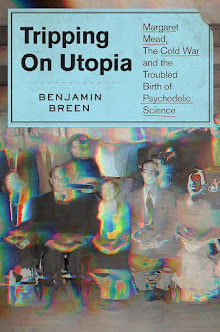"The study of simple drugs is a study so agreeable, and so exalted in its own nature, that it has been the pursuit of the first geniuses of all ages." - Pierre Pomet, Histoire generale des drogues (Paris, 1684).
"A book of high character was published in France at the conclusion of the seventeenth century, the General History of Drugs, by Monsieur Pomet, chief apothecary to the King... In this book M. Pomet expressed great indignation at the spirit of adulteration that had crept into the mummy trade. It was as hard then as now to get one's drugs in any reasonable state of purity." Charles Dickens, Household Words, February 25, 1857
 |
| Title page of the first English edition, 1712. |
Pierre Pomet's
Histoire generale des drogues (1684), translated into English in 1712 as
A Compleat History of Druggs, was a manual not only of the substances now identified as 'drugs,' but of a vast range of medicines, intoxicants, narcotics, dyestuffs, spices, foods and animal products. (See my earlier post
"A Drug Merchant in Seventeenth Century London" for a sample of what drugs encompassed in the early modern world --
mummies,
human skulls, powdered gems and bezoar stones were all in high demand). Although the 17th century witnessed the publication of many guides to drugs and medicines, Pomet's stands out both for its high production values and for its cross-over appeal to a popular reading audience that was hungry for tales of exotic locales, freakish beasts and strange drugs.
 |
| Pomet's portrait, from the French edition. |
Monsieur
Pomet (1658-1699) was the chief druggist to
Louis XIV, 'the Sun King,' and also maintained a fashionable private practice in Paris as the proprietor of an apothecary's shop. His book represents a breakthrough in European understandings of the new medicines and natural products being opened up by British, Dutch, Portuguese and Spanish expansion into the global tropics. The illustrations, in particular, are an advance on previous works. I plan to make a more in-depth post in the future about early modern theories of drugs -- which were connected closely to magic, spirituality and climate -- but for now I'll just post some of the most striking of the book's illustrations.
 |
Slaves in the West Indies feeding sugar cane into a vertical mill and working a boiler,
which was among the most arduous and dangerous jobs a Caribbean slave could be
burdened with. Sugar was classed as a drug/drogue/droga by early modern European
medical authorities, and played a key role in a number of medical concoctions. |
 |
A standout plate from the English translation featuring unicorns. As the captions note,
most hail from John Johnston's 1657 Historiæ Naturalis de Quadrupedibus (see here for
more on this most interesting work of early modern animal lore.) |
 |
| Bezoar stones were among the most precious substances known to early modern apothecaries, for it was believed that ingesting a tiny morsel of one could cure poisons and plagues. The fact that the fabled bezoar was essentially a hairball found in the viscera of certain goats and llamas did not deter kings, prelates and rich merchants from seeking them out. |
 |
Mandrake, Cork and the rare 'Peruvian Bark,' i.e. cinchona, which contains quinine.
|
 |
| This is by far my favorite image from the book, depicting the methods of making and finding mummy medicine -- note the bizarre pyramid at right, which looks vaguely South Asian to me. Unfortunately I couldn't find a detailed scan online. |
 |
| Another view. |
As an aside, I came across two interesting things while researching this post. The first, the bizarre and perhaps mythical 16th century Chinese medicine known as
"Mellified Man" (in which one voluntarily overdoses on honey, is buried in same, and then is sold as a medicine) is a topic that I will probably devote a full post to in the months to come if I can find any further information. The second is a wonderful website called
"Strange Science" which has a remarkably comprehensive archive of images of strange mammals from the Neolithic to the present
here.
For scholarship on Pomet, see
Sandra Sherman's "The Exotic World of Pierre Pomet's A Compleat History of Druggs" in
Endeavor and an essay by Jordan Kellman in the December 2010 of the excellent new journal
Atlantic Studies entitled
"Nature, networks, and expert testimony in the colonial Atlantic: The case of cochineal." Those interested in early modern unicorn lore should check out this
2006 BibliOdyssey post on the subject.














4 comments:
superb blog I'm most impressed
would love to hear your take on my Pico project
http://angelologyofmirandola.blogspot.com/
Hey There,
I actually came across a copy of this book - it was printed in 1735... I am looking to sell it and came across your blog. Do you have any idea if it has any value?
While beginning to read this post, it struck me that I really love early modern title pages. The extraneous information, the elaborate typesetting decisions, the use of red for emphasis.
Agreed! Early modern title pages are fascinating and often beautifully designed. The comically-long titles seemed odd to me when I was an undergrad, but now I sort of like them more than modern book titles - having to list the display the contents of the book on the first page makes being pretentious and obfuscatory a bit harder (not that this necessarily dissuaded some 17th century authors, of course.)
-Ben
Post a Comment